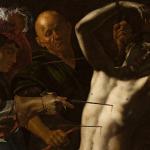In her book on Benjamin Constant, Liberal Values, Helena Rosenblatt examines the intertwining of religious and political concerns in the work of Constant and his lover/collaborator, Madame de Stael.
Through his early study of liberal Protestant theologians in Germany, Constant “hit upon what would be a central principle of his mature liberal philosophy – that there should be complete freedom of opinion and belief, and that such freedom was conducive to both intellectual and moral progress.” Freedom of religion was foundational to his conception of political order.
But during the French Revolution, that conviction was confronted by the need of the regime to cultivate the virtues of its citizens. But this had to be done without returning to the repressive Catholicism that preceded the Revolution. Even after the Terror, the Revolutionary government wanted to form Frenchmen into virtuous citizens, virtuous liberals. Though the post-Thermidorian government renounced the tactics of the Terror, “they had not given up on the goal of turning Frenchmen into civic-minded citizens, which, in their minds, meant detaching them from their religion. It was the pace and the methods that changed, rather than the goal itself.”
Constant himself saw the post-Revolutionary crisis in stark terms: ‘‘It is a matter of choosing between the stupefication [abrutissement] of man and his rehabilitation, between superstition and enlightenment, between the eleventh century and the nineteenth.’’ There could be no turning back to Catholic “theocracy,” yet the French remained stubbornly religious.
The challenge was all the greater because of the strength of Catholic counter-reovlutionary voices. Despite suppression, there was something of a revival in the aftermath of the Revolution. The Catholic Church was in disarray, but it had an articulate spokesman in the Abbe Gregoire, who argued that a consistently liberal regime would permit the Catholic Church to operate. In his periodical, Annales de la religion, Gregoire argues that “by obstructing the people’s right to practice their religion freely, the new regime was overstepping the legitimate bounds of government. Freedom of religion was a ‘sacred’ right protected by the ‘social contract.’ Gregoire’s newspaper further maintained that the Catholic religion posed no danger to the Republic or its principles; they were entirely compatible as long as governments ‘knew how to remain within the bounds of their competence.'”
Ultimately, Constant’s vision was to replace Catholicism with a more Republic-friendly religion. Constant’s proposal was to encourage Protestantism: “He claimed that, historically, Protestantism had always been ‘conducive to ideas.’ . . . this was a fairly widespread belief during the Enlightenment, when many people held Protestantism to be more favorable to all the progressive and reforming ideas philosophes held dear. Constant further claimed that, contrary to Catholics, Protestants would contribute usefully to the political culture because they were naturally ‘favorable to liberty.’ He cited Montesquieu in support of the claim that Protestantism was inherently ‘conducive to republicanism.’ Constant also delved into history, reminding the authorities that long before the Revolution, French Protestants had been the first to propose that France be turned into a republic.”
Constant was attracted to the arguments of Louis Marie La Reveillre-Lepaux, who proposed that a liberal form of Protestantism was the best option for France. The replacement religion should be one of “extreme simplicity.” La Reveillre-Lepaux argued that “A profusion of ceremonies, such as existed in Roman Catholicism, only caused worshipers to neglect their real duties towards God and their obligations to ‘family, neighbors [and] country.’ Too many ceremonies also ‘‘shrank the mind’’ and made men ‘haughty’ and ‘disdainful.’ Moreover, excessive fuss about ‘the exterior practices of devotio’ allowed priests to pose as necessary intermediaries between man and God, thereby acquiring undue wealth and influence. . . . the ideal republican religion should have no priests, or at least ‘no sacerdotal body,’ claiming a special relationship with God, since this turned people into ‘stupid and credulous executors’ of the wishes of the priests. All that was needed to ensure a truly ‘useful cult’ was ‘a couple of dogmas’: the existence of a God who rewards virtue and punishes vice, and the immortality of the soul. When a constitution was republican and itself based on ‘simple and clear principles,’ so should be the religion that sustained it.”
Madame de Stael agreed, arguing that “Protestantism was becoming more enlightened by the day.” In her words, “Every day, the most enlightened ministers among the Protestants are removing all that remains of dogma in their belief. Many of them are socinians, that is they differ from theophilanthropists only in their specific adoption of the excellent morals developed in Scripture. It is a book that they prefer; it is no longer a god made man whose words they implicitly accept. With these changes growing stronger every day, Protestants and theophilanthropists, or to abbreviate, deists, are getting closer in their principles.”
Both Constant and de Stael “reasoned that Protestantism, due to the simplicity of its dogmas and ceremonies, its morality, and its lack of priestly authority or coercion, was the highest point of perfection religion had so far reached in the history of mankind. Notably, also, Protestantism contained within itself the ability to improve over time.”
The Revolution, and the liberal order it established, was best buttressed by liberal theology.











